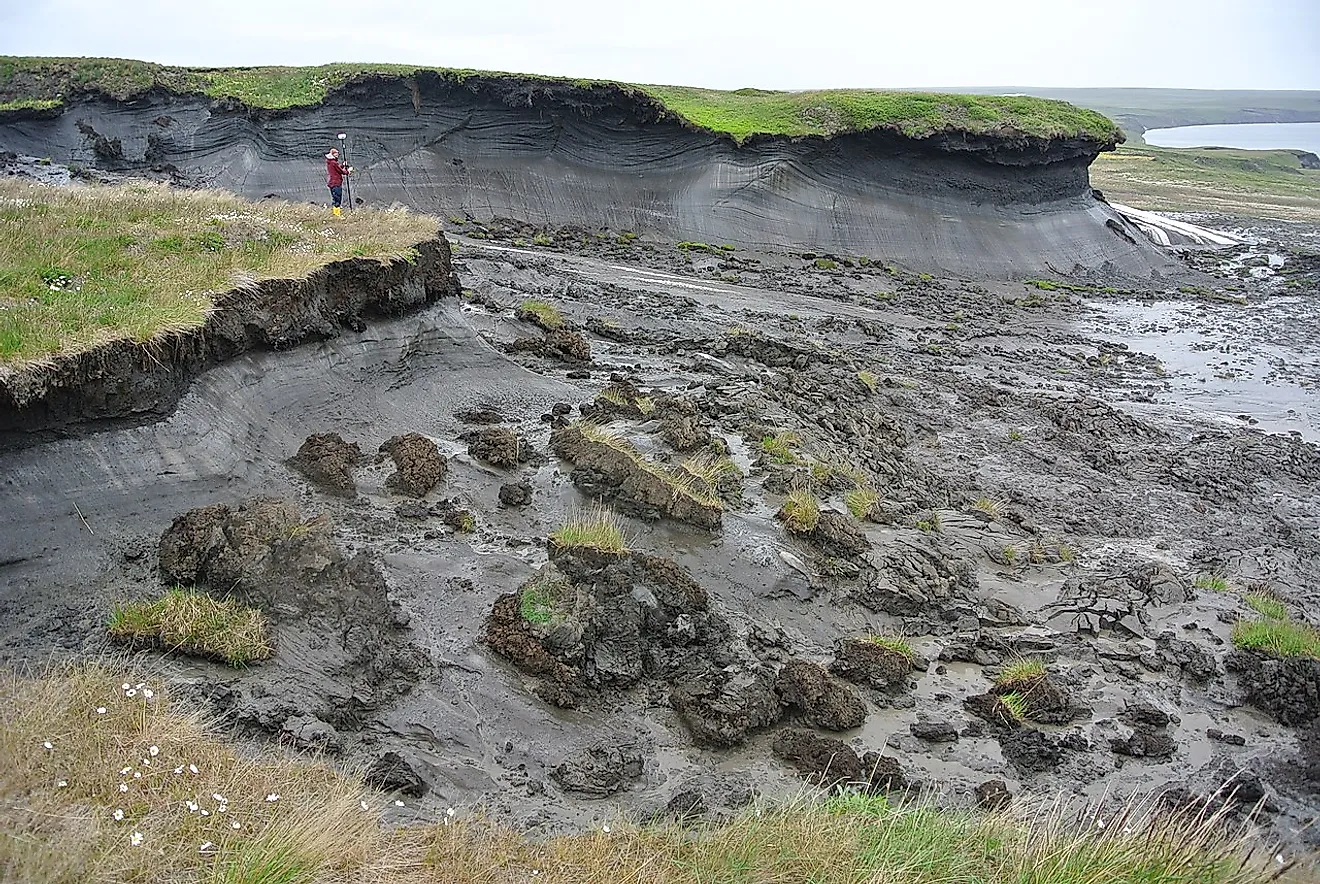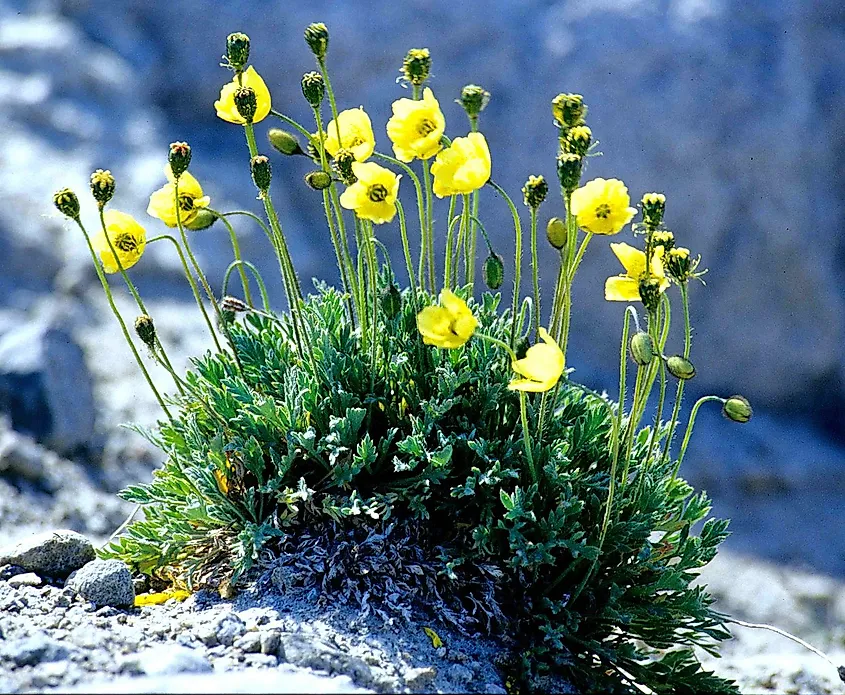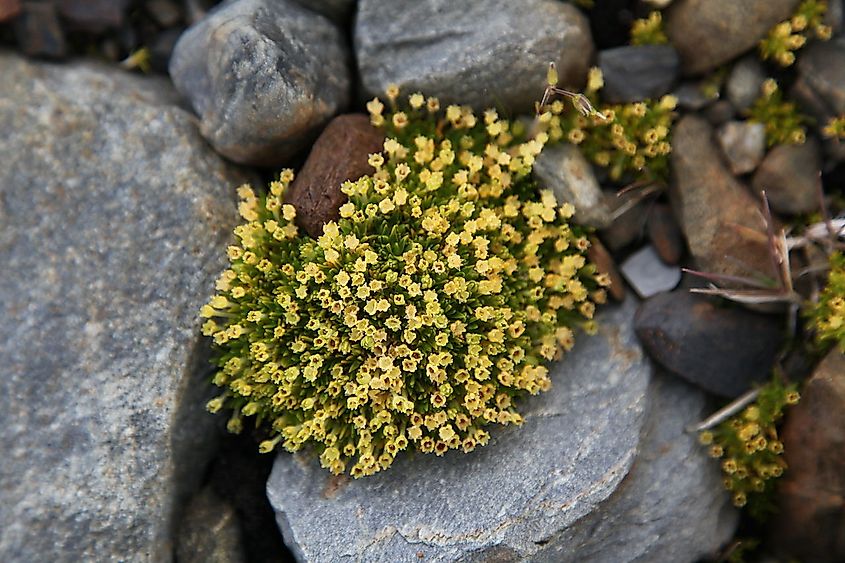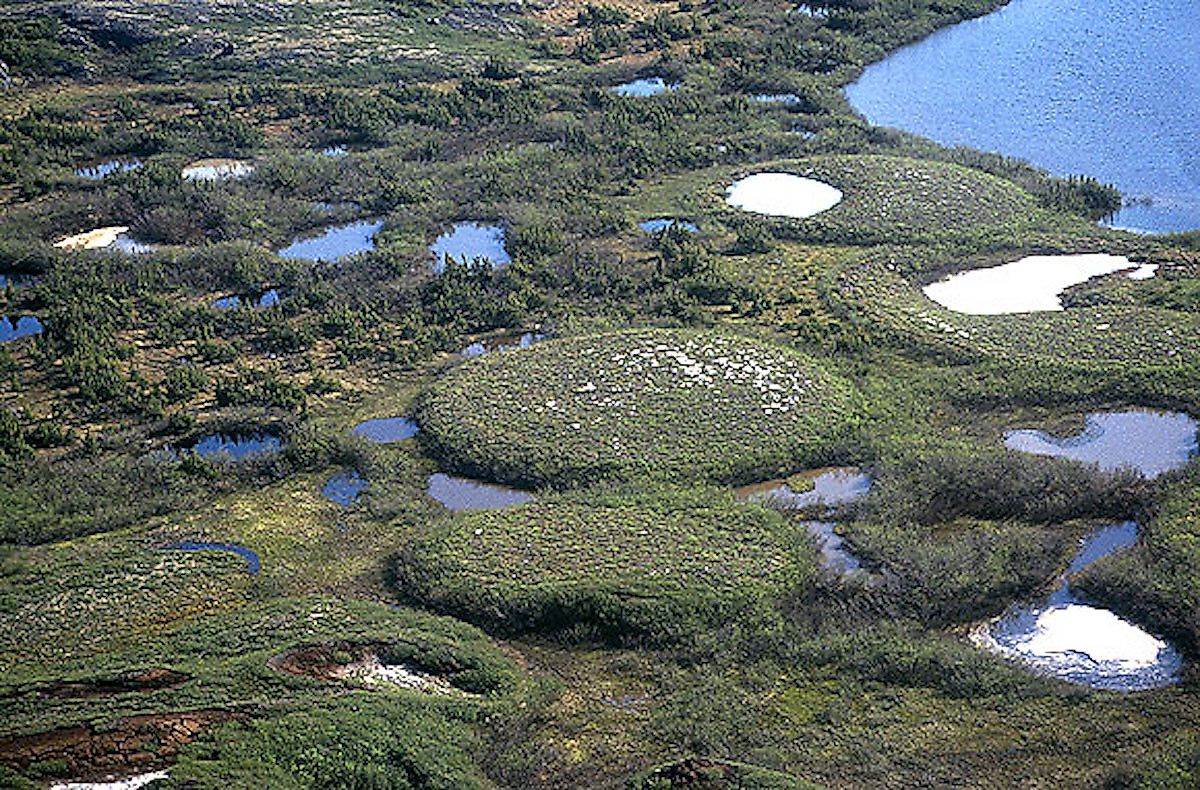Can Plants Grow In Permafrost?

- Hundreds of lichens and mosses live in Antarctic.
- Plants grow in the active layer on top of the permafrost.
- The Arctic is home to about 1,700 species of plants.
Plants need just a few things to survive: sunlight, water, nutrients, fresh air, and enough space to spread out and thrive. They are simple creations, in a way. They can also be seen as complex, however, because only certain plants can grow in a given climate or geographical area. Some plants are tolerant to dry hot days and cold nights, and others need constant, moderate temperatures, and others still want some shade and some sun but not too much of either one. We know that some plants, like a cactus, can withstand extreme heat and thrive in a hot desert. Can plants live where it is extremely cold, however?
Permanently Frozen but Active

At both the south and north poles, home to some of the coldest temperatures on Earth, there is ground that never thaws. It is called permafrost, and by definition, this is subsurface soil that stays completely frozen for a minimum of two years, without thawing. This means the ground remains at 32°F (0°C) or colder and has ice in it.
You can say that plants can grow in the permafrost, if we refer to the term “permafrost” in a general sense. According to NASA, up to a quarter of the land in the Northern Hemisphere has permafrost underneath it, which consists of various layers of soil. The lower layers are technically where you can find the true permafrost as these layers do not thaw out. They consist of a heavy mixture of rock, soil, and sand which is held together by large swathes of ice, underground.
On top of this is what is called the “active layer”. This is where plants can sometimes grow. This section is made up of large amounts of organic carbon, which is matter made from dead plants that have never decomposed because of the extreme cold temperatures.
Unlike the ground beneath it, the active layer does thaw each year in summer in warmer areas, and refreezes in the fall. According to its definition, permafrost is actually underground, and so plants can not grow there. They can grow, however, in the active layer on top of it.
Arctic And Antarctic Plants

Since the active layer of the permafrost is often not that thick, plants that require deep root systems, like trees, cannot grow at the poles. There are many smaller plants that do thrive there each year, when temperatures rise in the warmer season.
In the Arctic, you can find about 1,700 species of plants. These include herbs, grasses, dwarf shrubs, mosses, lichens, and flowering plants. Some specific examples of arctic plants are purple saxifrage, the pasque flower, the arctic poppy, cotton grass, and reindeer lichen.
The Antarctic is also home to many types of plants. These include hundreds of species of moss and lichen, and two vascular plants: Antarctic hair grass and Antarctic pearlwort.
1. Reviving Ancient Plants

Places with extreme cold temperatures that provide for ground that never thaws are places that can also store history frozen in time. Scientists have found sediment containing ancient seeds from plants that were alive 30,000 years ago frozen in places like Siberia.
Amazingly, with some skill and luck, scientists are now able to bring some of these plants back to life. They do this by applying growth hormones to the plant remnants. This can kick-start the plant’s growth. As the permafrost melts with global warming, more ancient plants are likely to be “reborn” and other secrets revealed from beneath the ice. Global warming is not really a good thing in general, but it is enticing to think of what we may discover.











